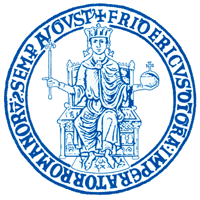Location
The University of Naples Federico II (Italian: Università degli Studi di Napoli Federico II) is a university located in Naples, Italy. Founded in 1224 it is the oldest public non-religious university in the world, and is now organized in 13 faculties. It was Europe's first university dedicated to training secular administrative staff, and one of the oldest academic institutions in continuous operation. Federico II is the third University in Italy by number of students enrolled, despite its huge dimensions it still represents one of the best Universities in Italy being an excellence in particular for research; in 2015 it was ranked among the first 100 universities in the world by citations per paper.] As of 2016 it is the only generalist Italian university in the Times higher education reputation, which considers the best 200 best universities in the world. The university is named after its founder Frederick II. From October 2016 the University hosts the first ever Apple IOS Developer Academy.
Source: Wikipedia (consulted d.d. February 21st 2018)
Members:
Resources
Displaying 26 - 30 of 56Bio-Energy Connectivity And Ecosystem Services. An Assessment by Pandora 3.0 Model for Land Use Decision Making
Landscape connectivity is one of the major issues related to biodiversity conservation and to the delivery of Ecosystem Services (ES). Several models were developed to assess landscape connectivity but lack of data and mismatching scale of analysis often represent insurmountable constraints for the correct evaluation and integration of ecological connectivity into plans and assessment procedures. In this paper a procedure for ES assessment related with Habitat and Bio-Energy Landscape Connectivity (BELC) is proposed.
Parametric Modeling of Urban Landscape: Decoding the Brasilia of Lucio Costa from Modernism to Present Days
The paper presents the case study of the Pilot-Plan of Brasilia, important example of modernist urban design protected as human heritage. Discusses a methodological process to promote visualization of maximum envelops of urban volumes, organized in a set of rules and scripts which structures urban parameters in a logic of volume constructions. Applies City Engine - ESRI facilities to construct and visualize the urban rules. It has the goal to promote characterization, analysis, proposals and simulation of urban parameters in order to support decision making in land use transformation.
Marginality Phenomena and New Uses on the Agricultural Land. Diachronic and Spatial Analyses of the Molise Coastal Area
This paper analyzes the evolution of land use in the Molise Region. The attention is focused on the changes that occurred primarily on the rural area of the coastal area in this Region. The presence of urban centers of limited dimension, both for the demographic performance and for the dimensional order, is the main characteristic of this area. The historic part of rural tradition, at the same time, no longer emerges as a primary component of the regional landscape.
Strategic Planning of Municipal Historic Centers. A Case Study Concerning Sardinia, Italy
The conceptual horizon of this essay is related, on the one hand, to the adjustment process of the implementation plans of the historic centers of the municipalities of the Sardinian region to the Regional Landscape Plan (RLP), and, on the other hand, to strategic planning as an important tool to guide land transformations in order to implement effective local development processes. We address these issues through a critical analysis of a set of implementation plans of the historic centers (IPHCs) of Sardinian municipalities adjusted to comply with the rules of the RLP, in the frame work o
Achieving People Friendly Accessibility. Key Concepts and a Case Study Overview
The present paper stems from the evidence that one of the reasons of the “crisis” of today's cities probably depend on mobility issues. But what should be done to confront all the negative impacts of passenger transportation, without curbing mobility? Can Urban Engineering be applied to promote a friendlier mobility, that should be not only environment and climate friendly, but user friendly as well? And how?


